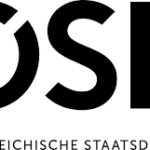youniqx Identity: Pioneering Europe’s Path to a Secure Digital Future

The coming years could be crucial for the progress and reception of digital identity solutions. The European Union is establishing a unified framework for digital credentials. By the end of 2026, all member states are expected to offer digital wallets. The focus is on usability, interoperability, and, above all, giving citizens control over their data.
While the new regulation will turn out to be a challenge for some member states, Austria is at the top of their eID game – thanks to the expertise of youniqx Identity, a digital subsidiary of Österreichische Staatsdruckerei (Austrian State Printing Company).
Trending Topics talked to Sebastian Zehetbauer, CPO of youniqx Identity. What makes his company successful? How have digital identity solutions evolved? And what is his opinion about future advancements?
Trending Topics: How did you come to join youniqx Identity?
Sebastian Zehetbauer: I have a master’s degree in business informatics and worked for a big four accounting firm after I graduated. I joined the Austrian State Printing Company almost 15 years ago as a project manager. Immediately I was fascinated by a company that has a 200 year history and to transition to a highly digital company providing products for the 21st century.
What was the initial idea that led to the founding of the company?
In 2012 we decided to establish an innovations department inside the Austrian State Printing Company focusing on digital identities. We wanted to explore the importance of digital identities – not within two or three years but regarding the next 25 or 30 years.
That’s why we came up with MIA (“My Identity App”). We didn’t exactly know in which direction to evolve then, but we were sure it was going to be relevant for people’s everyday life. In 2015 we presented our application very, very early. I think the market was not ready by then but retrospectively we made the right decision and in 2017 we founded youniqx with the goal to transfer state issued documents to smartphones. Wallets and mobile payment were already launched so there was a great potential.

Would you explain your approach with MIA?
The MIA platform is our main product. Due to our beliefs that it is vital to have current and up to date data in verification processes we started with an online solution. In 2018 the International Organization for Standardization (ISO) started to work on a standard for mobile driving licenses with a strong focus on offline capabilities. So we adapted our system to current market developments and customer feedback.
Now we have a very flexible platform that combines digital and physical options to ensure usability and safety. We currently provide the solutions for Austria and Liechtenstein.
Can you tell us about other current projects of youniqx?
We do have other products in our portfolio. We created an app called CHECK-AT which is a companion app to the Austrian ID card and passport. The app reads and decodes the QR code on these documents and helps to identify security features of this documents. In addition we issued a cold wallet together with Coinfinity which is called chainlock. It’s a high secure card to store digital assets like crypto purely offline and we guarantee that we have never seen the private key before.
As a pioneer, youniqx was also involved in the development of the ISO 18013-5 standard. What is this is all about?
ISO 18013 is a group of standards defining the physical and digital driving license. They give a general guideline that ensures interoperability and the “-5” is the fifth part of this ISO. It is the standard for the digital driving license – how data should be stored, secured and securely transferred.
In my opinion there is no alternative to these standards. Interoperability is one of the most important aspects from a technical perspective. Additionally, they ensure security and guidance for governments and businesses.
The EU issued the eIDAS 2.0 regulation, an update for Electronic Identification and Trust Services. How do you see the future of digital identities and credentials?
I think that we all have to get ready for a whole new era of secure, user-driven digital identities — because the future is already knocking. The purpose of the eIDAS 2.0 regulation is to ensure universally trusted electronic identification for both individuals and businesses. The idea is to streamline and secure digital identities across EU borders. I am eager to see how this is going to adapt in real life. I do think it’s very important to provide users with freedom and control, but it is important do it in a way that’s not too overwhelming.
The implementation of the EUDI Wallet by 2026 is a major topic in the industry. How will it influence digitization?
I would say it’s not just an app holding credentials but an enabler for how we use digital credentials in the future and it is vital for interoperability. I think it will transform how Europeans are going to share their official information. Of course, there will be a lot of wallets that have different looks depending on each country but the basis is the same for everyone.
I believe there’s going to be a shift on how we are using digital identities. Is it realizable by the end of 2026? For some member states yes for others maybe not. It will take some more time, but I think it’s redefining the digital identity landscape in Europe – creating a future where individuals, businesses and governments can benefit from secure user controlled interactions.
Digital identity is often associated with governments and authorities. Is this really just a government issue?
I’d say while digital identity initiatives are often driven by government programs like eIDAS they do have a significant relevance for the private sector. Users want to use their digital ID for banks, health care providers, telecom operators, universities and so on. Governments may set the legal framework but the innovation is happening in the private sector.
How do you approach data protection and security at youniqx Identity?
When dealing with identity data you have to implement the highest levels of security within your company’s DNA. It’s built in from day one. Therefore you have to figure out potential misuse and identify risk factors.
A look into the crystal ball: What do you expect for the future of digital identities and credentials in the next 5 years?
It’s really a crystal ball but I believe in an increasing number of use cases for citizens and individuals using digital identities. Yet I also believe that a digital identity will not be the sole solution. I think it’s important to have physical documents as well in order not to lose the broad user acceptance on the way.
Of course there have to be user-friendly applications to achieve universal acceptance. Digital identities are not solely about data security but also transparent business processes which come along with digitization. Users need a benefit in order to use it. It has to make something easier, more convenient. Otherwise, people won’t use it.
Österreichische Staatsdruckerei: Vom Wachssiegel zur digitalen Signatur



























